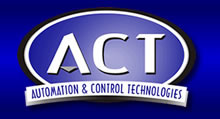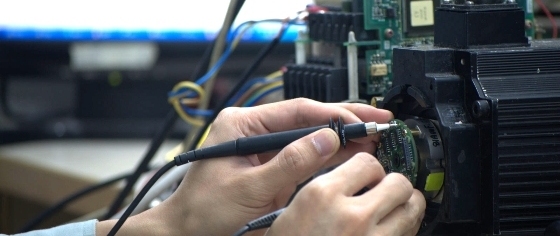
Servo Motors Repair Procedures
---Reconditioning and alignment of your servo motors
Servo motors are dynamic and complex motors that place special requirements on overhaul and repair. Every Servo Motor that goes through our facility goes through an extensive evaluation to not only find the problem with the motor but also to make sure we will be able to bring your old, broken down Servo Motor back to life as if the factory just sold you a new one.
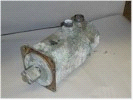
Here is how the typical Servo Motor comes into our facility before any evaluation has been done.
From here we evaluate it and look for any dynamic or static parts that do not meet factory specifications.
In order to properly repair your Servomotor we need to have a good working relationship with the factory and original technical data sheets to obtain the finite specifications for the servomotor. This makes the difference between whether your Servomotor runs okay or whether it runs as if it is new from the factory once your Servomotor has been refurbished by ACT.
Our goal is to give you a Servo Motor that is not only repaired but has been refurbished back to as new condition.

Here is how the typical Servo Motor leaves our facility.
Throughout Our Evaluation we inspect all electrical and mechanical parts on all Servo Motors. We look for bearing fits, housing fits, worn output shafts and corroded and or broken flanges. We will remanufacture or repair any part that does not meet the factory specifications.
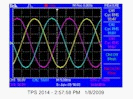
This is an oscilloscope printout of an Allen Bradley Servo Motor of what we would expect to see on a good Servo Motors BEMF (back electromotive force).
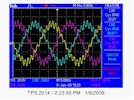
This is an oscilloscope printout of the same Allen Bradley Servo Motor before we recharge the magnets on this Servo Motors BEMF.
We manufactured a new front flange using the old flange and any factory dimensions that we could obtain.
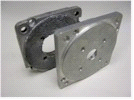
Here are two front flanges off a Kollmorgen Servo Motor.
During the Servomotor Repair all the windings, whether they are AC or DC Servomotors, are washed, baked and tested. Throughout the assembly process each Servomotor Repair will be meggered numerous times. This test is to make sure there are no grounded electrical parts in the Servomotor.
On AC stators we surge every stator at 1800 volts. This test ensures that the insulation and windings will withstand the loads put on the Servo Motor when running on a machine.
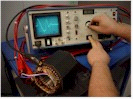
This is a stator being surge tested showing a good surge pattern.
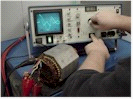
This is a stator being surge tested showing a bad surge pattern.
On DC Servo Motors after the baking process all armatures go through a bar to bar test. This test will show if there are any shorts or opens in the winding. After the bar to bar testing we will turn the commutator then undercut it, retest it with the bar to bar tester and finally dynamically check the balance before reassembly is started. During DC Servo Motor Repairs it is a common practice for us to replace many of the brush holders. If the brush holder has any wear to it at all or if the bake-o-lite insulation tube has any chips or cracks in it we will change the brush holders out to new ones.
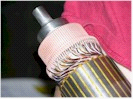
This is an armature commutator. The commutator is where the bar to bar testing is performed.
The commutator is the surface of the armature that the brushes run on to deliver the power to the armature windings. Most failures occur right at the connection of the commutator bar and windings.
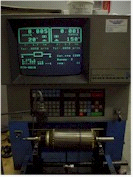
This is an armature being dynamically balanced.
Balancing rotors and armatures is a critical step for smoother, longer lasting life of a Servo Motor. An imbalanced rotor or armature can cause a vibration in the machine that will affect the finished parts that have been machined.
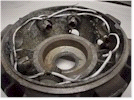
This is a typical brush rigging end bell off of a Getty’s DC Servomotor.
During the evaluation for the servo motor repair we inspect each and every brush holder. If there are any signs of overheating, wear or fatigue of any sort we will replace any or all of the brush holders including changing of the lead wires going to the brush holders.
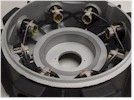
This is what a typical brush rigging repair looks like after we have completely rebuilt it with new brush holders and lead wires going to each of the brush holders.
We use high grade sealed bearings in all of our Servo Motor Repairs. We feel that each Servo Motor repair will have a longer lasting life with sealed bearings because the seals will keep any dirt and contamination from getting into the bearing races. We also put double lip seals in the front flange of the Servo Motor to keep any coolant from getting to the bearing. All of our Servo Motor Repairs use ALL new seals, o-rings, gaskets and connectors to ensure that your Servo Motor is protected from water contamination. We also use a two part epoxy coating for an added layer of protection. This coating is the same coating that the Navy uses on their submarines.
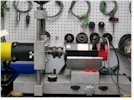
After each Servomotor is assembled they are back driven to check that encoder feedback outputs, motor BEMF meet all factory specs. At this time we align the Servomotor windings and encoder outputs to each other.
Alignments on Servo Motors are also one of the most important preliminary tests that have to be checked before and after the Servomotor gets repaired.
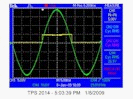
This is an oscilloscope printout of a standard alignment on an Allen Bradley Servomotor.
The final Servo Motor Repair process is to run your Servo Motor on the factory drive just like the one in your machine. This final test allows us to make sure all the previous steps in our Servo Motor Repair process were done correctly. It also allows us to run the Servo Motor at full voltages and full currents of the Servo Motors capability. We are constantly buying new drives in order to stay up to date with the manufacturer’s changes.

This is a Fanuc Spindle Motor drive runninga Fanuc Spindle Motor.
Finally, we make all new name plates for each of our Servomotor Repairs. We put all of the original data on the name plate, even contacting the original manufacturer if necessary. We also put Servotech’s name and job number on the tag for traceability along with date codes so you as the customer know exactly when your Servomotor Repair was done.


OLD NEW

